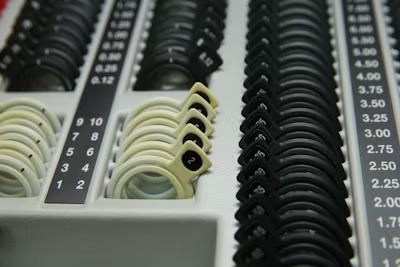In the world of industrial manufacturing and maintenance, the significance of caps and plugs is often understated. Cap plugs are essential for safeguarding the integrity of equipment by keeping contaminants out and ensuring that internal components are not exposed to damaging elements. From the aerospace industry to electronics, the use of caps and plugs ensures that operations run smoothly and equipment remains undamaged during production, storage, or transportation.
Applications of Caps and Plugs in the Aerospace Industry
Caps and plugs are critical in the aerospace industry, where the utmost precision and safety in all components are crucial. To preserve the integrity of aircraft parts, hydraulic systems, and engines, these components must be shielded from environmental factors. Caps and plugs are employed during the storage and maintenance of aerospace parts to ensure that no foreign materials compromise the equipment.
The use of high-quality and durable caps and plugs is particularly significant in aerospace applications due to the extreme conditions that aircraft components are subjected to. Whether it’s to withstand high pressures, varying temperatures, or exposure to aggressive fluids, these small components must meet stringent standards.
During the assembly of an aircraft, caps and plugs help protect the precision-machined surfaces and internal components of the engine and fuselage. Aerospace engineers rely on various specifically designed caps and plugs to secure these sensitive areas against any potential damage.
Transportation of aerospace components also relies on proper capping and plugging to prevent contamination and physical damage. Logistical operations in the aerospace sector require components to remain sealed and intact, whether they are being moved within a manufacturing plant or shipped to another location.
Custom Caps and Plugs for Automotive Manufacturing
In automotive manufacturing, custom caps and plugs are designed to fit specific components of a vehicle precisely. This customization is critical for protecting essential parts such as fuel lines, brake systems, and engines during manufacturing and assembly.
The variability in automotive components necessitates a diverse array of cap and plug designs. Engineered for different applications, custom caps and plugs can handle extreme temperatures, resist chemical degradation, and conform to various shapes.
Automotive industry regulations and standards further dictate the use of caps and plugs throughout vehicle assembly as part of strict quality control measures. This proactive approach ultimately leads to greater customer satisfaction and reinforces brand reputation in the market.
Moreover, these custom-designed caps and plugs facilitate automation in automotive production lines. They allow for quicker application and removal, thereby accelerating assembly operations while maintaining precision.
Essential Caps and Plugs for Pipe Protection in Oil and Gas Operations
The oil and gas industry operates under harsh conditions where equipment reliability is paramount. Caps and plugs maintain the integrity of pipelines and drilling equipment, protecting internal components from exposure to corrosive substances and extreme pressures.
Downtime in oil and gas operations can result in substantial financial losses. By using caps and plugs to seal off pipes and valves during maintenance or when they are not in use, companies can minimize the likelihood of unscheduled work stoppages.
During the transport and storage of pipes used in oil and gas exploration and production, caps and plugs prevent the intrusion of dirt, sand, and other particles that can impede the function of piping systems.
Additionally, caps and plugs are used in the oil and gas industry to ensure compliance with environmental regulations. By sealing off openings, they prevent accidental spills and leakages that could have severe environmental repercussions.
Advantages of Using Caps and Plugs in Electronic Component Assembly
Manufacturing of electronic components involves working with delicate parts that can be easily damaged by static electricity, dust, or moisture. Caps and plugs serve as protective barriers for connectors, jacks, andother sensitive interfaces during the assembly process.
Another advantage of using caps and plugs in electronics assembly is their capacity to facilitate automated processes. Manufacturers employ caps and plugs that are quick to apply and remove as part of rapid production techniques. This harmonization with automated assembly systems helps in maintaining a high throughput.
The scalability of caps and plugs is especially beneficial in electronics, where production volumes can be vast. Moreover, caps and plugs are cost-effective and do not significantly contribute to the overall manufacturing expense.
As technologies advance, electronic devices are becoming smaller and more complex, requiring equally minute and precise protection measures. Caps and plugs have evolved to meet these demands, providing customized protection solutions for even the most intricate electronic components.
Altogether, caps and plugs play an indispensable role in safeguarding equipment and components across diverse industries. Their applications ensure sustained operation, regulatory compliance, and product reliability, contributing significantly to industrial efficiency and safety.











